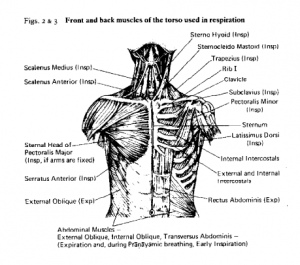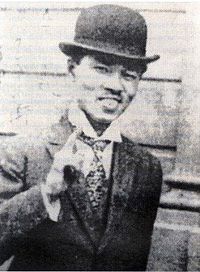“The best doctor cures those not yet ill.” This is preventative medicine. You can cure any future illnesses if you receive qualified advice today. Sixty to seventy percent of cancer is self-inflicted through lifestyle—so preventative medicine is the best cure. The following are a few points on preventative medicine.
First, the Classic on Internal Medicine states, “Illness enters through the mouth,” so eat at certain times and in definite amounts—and watch what you eat! The ancients said, “Your meat should not over- come the meal’s substance.n9 Avoid foods that are rich, fatty, sweet, fragrant, or parched; stay away from foods too soft or oily and eliminate snacks! Drink some liquids before going to bed and after waking up; eat foods that help your digestion. Don’t eat more than 70% full at breakfast or dinner—at lunch you may enjoy yourself and eat up to 80%. Liquids benefit our yin while solids benefit your yang. These are the teachings of the wise Chinese men of old. The dietary habits of Americans are totally opposite to this. One should eat more at lunch because movement assists digestion. After dinner we are generally inactive, so a large evening meal confines our digestive system and an illness may slowly accumulate. Such a diet goes against the Tao of proper living. A balanced diet not only strengthens our stomach and spleen systems but also prevents cancer and other illnesses.
Second, the I Ching says, “As nature is always creatively active, so too the noble man constantly improves himself.” This same idea is expressed in the proverb, “A moving hinge doesn’t rust, running water doesn’t smell.” Without proper exercise anyone may quickly become old and infirm. During the Eastern Han Dynasty (25-220 AD) the legendary Hua T’o created the Five Animal Frolics, whose main exercises are exhibited in the two postures, The Constant Bear and The Stretching Bird. These movements help us to digest grains. Unfortunately, Hua T’o was innocently executed and left behind a single disciple, who fled into seclusion and reportedly died a youthful 120. It is a shame that their art of longevity was lost to the world. During the later Sung Dynasty (960—1279 AD), Chang San-feng created taichi, an exercise that surpasses even Hua T’o’s exercises.
About forty years ago I contracted tuberculosis and was near death. I began this exercise and not only quickly recovered, but also eliminated a hundred other minor illnesses—my body soon possessed the flexibility of a child. T’aichi relaxes the sinews and vessels and harmonizes the blood with chi. It is impossible for a taichi student to become suppressed, so cancer cannot gain a foothold. These are some of the benefits I have received from taichi, the worlds finest cancer prevention exercise.
Third, the medical classics say that like species can assist one another—but this is not true with the liver; the liver should never be supplemented. This liver is called the General of Fire and easily becomes suppressed. The ancients had other methods for dealing with the liver; separating, scattering, draining, softening, nourishing, comforting, dampening, etc. During spring all vegetation is alive, expanding and diffusing itself. The liver is correlated with the element wood because it too has a nature that enlarges itself. When we butcher a chicken, pig, cow, or lamb, the suppressed ch’i of their body enters the liver. In ancient times, when people were much more in touch with nature, men even died after eating liver in the spring!
Today, many doctors and herbalists prescribe liver remedies to supplement their patient’s blood. This provides quick relief and quick profit, but may actually precipitate an illness. Few are aware of this, and in recent years I’ve seen a daily increase in the number of cases involving inflammation of the liver, cirrhosis of the liver, and liver cancer. I suggest one method of cancer prevention is to stop taking supplementary doses of liver pills indiscriminately.
Fourth, the virtuous and wise men of old all followed the I Ching, “Find peace in nature, trust your fate.” If you possess this inner peace, then my previous three points on preventing cancer can be ignored, as this alone is the greatest and best method. How do you find peace in nature and understand fate? Start by eliminating desires and following what is natural. Trust your fate, for where there is life, there is death—don’t destroy yourself. Follow your original nature and pursue a quiet, reflective life. Then cancer will never harm you.
Summary: In ancient times, the best doctor cured those not yet ill, and the noble man never rested in improving himself.
Q: Does taichi really possess such marvelous application? Does the liver really possess such harmful potential?
A: Taichi is like swimming on dry land; it relaxes the sinews, opens the vessels, harmonizes the ch’i with the blood, and benefits both mind and body. It surpasses the benefits of swimming with none of its harmful side effects. With taichi, eradicating disease and lengthening your life are within reach. Eating liver directly supplements your liver. The Classic on Internal Medicine says, “Like species supplement each other,” and the I Ching says, “Similar ch’i search each other out.” But the Classic on Internal Medicine also says, “Do not supplement the liver.” Liver was aligned with the element wood to show its proclivity to spread or enlarge. Too much fertilizer under the tree hardens the wood; this is similar to cirrhosis of the liver and other disorders we see today.
source: Master of Five Excellences

 Pranayama (Chinese Qi Gong, Tibetan Cha Lung) is a series of practices focused on the breath. These practices have become increasingly popular over the past decade or two, but unfortunately most people are doing the practices completely wrong. When done right, Pranayama can heal serious illness without any other method complimenting it. Because these practices are so potent, when done wrongly, the same practices can also be the cause of serious illness, or even death.
Pranayama (Chinese Qi Gong, Tibetan Cha Lung) is a series of practices focused on the breath. These practices have become increasingly popular over the past decade or two, but unfortunately most people are doing the practices completely wrong. When done right, Pranayama can heal serious illness without any other method complimenting it. Because these practices are so potent, when done wrongly, the same practices can also be the cause of serious illness, or even death.